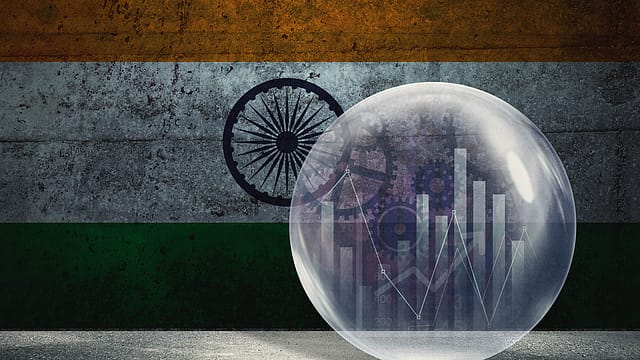Falling forex reserves, rising CAD may shake India's sovereign ratings: S&P
ADVERTISEMENT

India is facing a mixture of factors that may shake its sovereign credit metrics amid falling foreign exchange reserves and rising current account deficit, according to S&P Global Ratings.
The fall in its foreign exchange reserves to around $533 billion currently, from a peak of about $634 billion in 2021, is driven in part by India's growing current account deficit, which is expected to jump to 3% of GDP in the current fiscal year, versus just 1.6% of GDP in fiscal year ended March 2022, as the country's import bill surges, the ratings agency says.
This comes at a time when the Indian economy is battling higher inflation and tightening financial conditions both at home and globally. The Reserve Bank of India (RBI) started a rate hike cycle in May 2022 after inflation breached the upper bound of its 2%-6% target range.
"We expect the RBI's policy rate to end fiscal 2023 at 5.9% versus 4.0% prior to the commencement of the tightening cycle. Higher rates and faster price increases will somewhat suppress consumer behavior, and this could soften near-term growth momentum," says S&P Global Ratings.
The rise in rates is pushing up the cost of government funding, the ratings agency says. So far this year, the yield on the Indian government's two-year bonds has risen by about 230 basis points (bps) in the secondary market, to around 7.3%.
"A stress scenario assuming consumer price inflation and benchmark interest rates surpassing our current forecasts by 300 bps and 250 bps, respectively, for an extended period of time, could put more pressure on the sovereign ratings. This is because such a development could entail significantly slower economic growth, higher net general government fiscal deficits and net indebtedness, and a weakening of India's institutional capacity to maintain sustainable public finances," says S&P Ratings.
December 2025
The annual Fortune 500 India list, the definitive compendium of corporate performance, is out. This year, the cumulative revenue of the Fortune 500 India companies has breached $2 trillion for the first time. Plus, find out which are the Best B-schools in India.
Under this scenario, the government's already elevated interest burden could rise even further, it adds.
India's strong economic growth rate has long been an important counterbalance to its high fiscal deficits and debt burdens, and its sound external balance sheet helps to buffer against global market turbulence, says the ratings agency.
"We expect commodity prices, particularly for energy, to stabilize around current levels through 2023, after which they may decline more meaningfully. This would alleviate the pressure on India's current account, and is a key assumption supporting our expectations for the deficit to decline gradually through fiscal 2026. Nevertheless, if its current account deficit remains higher for longer, compared with our current base case forecasts, that would impinge on India's external balance sheet," says S&P Global.
S&P retained its forecast for inflation to average 6.8% in fiscal 2023, before falling to 5.0% in fiscal 2024 and 4.5% per year beyond that.
In the event of a prolonged downturn in real and nominal GDP growth, material downward pressure on the sovereign ratings could emerge, especially if large government deficits are left unchecked, warns the ratings agency.
